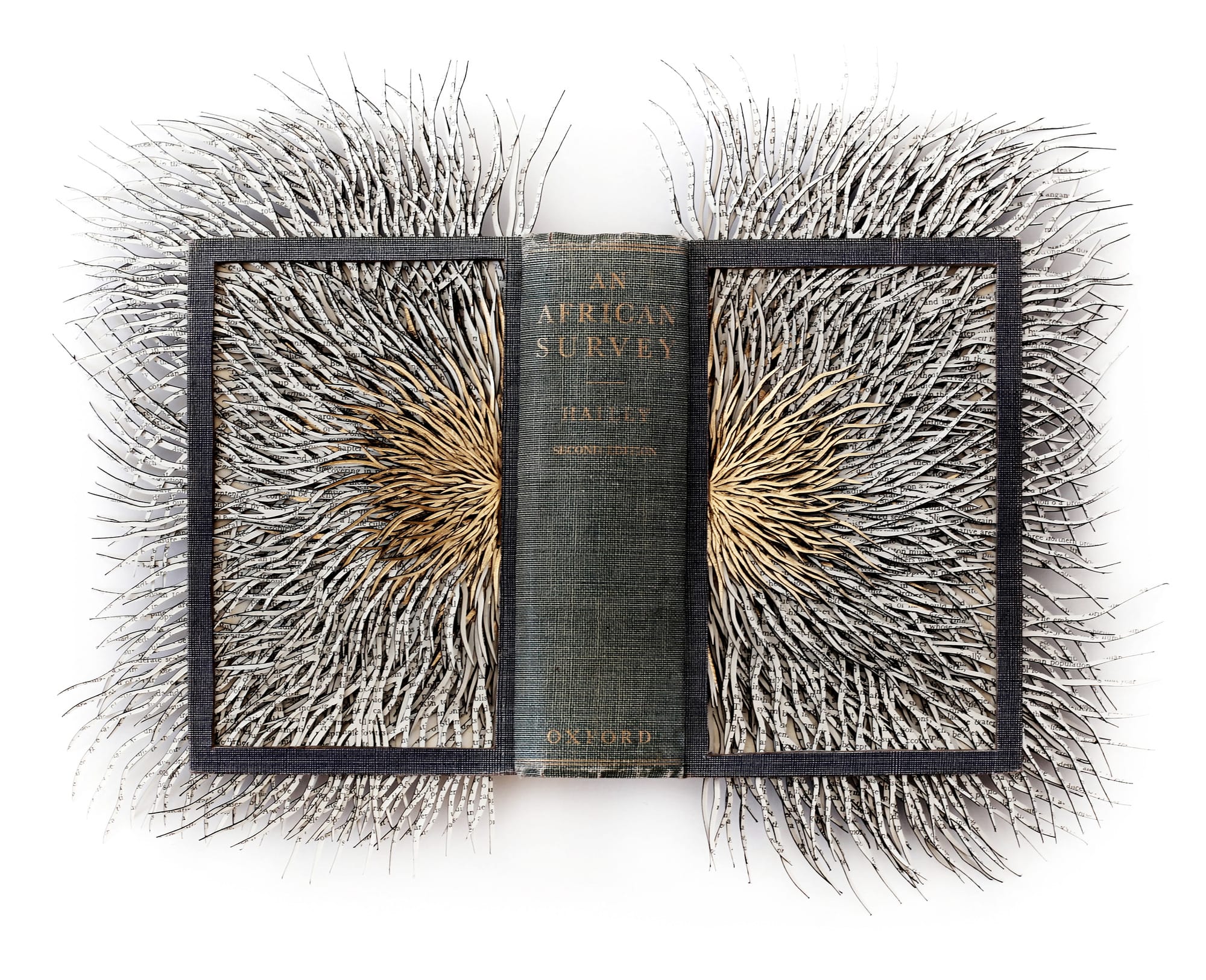[ad_1]
While heavy, hardcover reference books often embody prestige and historical value, the comprehensive volumes also carry an air of intellectual overload. Filled from cover to cover with extensive and complex concepts, the tomes beckon the Paradox of Knowledge, which states that the more we learn, the more we realize how little we actually know.
This vexing liminal space between the known and unknown is a driving force for Barbara Wildenboer’s work. The Cape Town-based artist (previously) sources secondhand books that span a wide range of languages, worldviews, and subjects such as philosophy, art, history, music, biology, archaeology, and more. Fascinated by linguistics and systems of writing, Wildenboer aims to decode the ways that we assign meaning to symbols.
Scalpel and scissors in hand, Wildenboer transforms countless book pages into narrow, capillary-like slivers that splay outward from the spine. Through these symmetrical sculptures, the artist references other naturally mirrored forms like the brain’s left and right hemispheres linked by the corpus callosum, the wingspan of the death’s-head hawkmoth, and the Rorshach inkblot.
Wildenboer connects these formal qualities to the process of deciphering texts. Her biography notes, “she cuts through these dense and claustrophobic discourses, rendering them mute.” Instead, she alters books to the point that they’re no longer legible, transforming the once familiar characters into new glyphs.
See more from the artist on her website and Instagram.
[ad_2]
Source link

